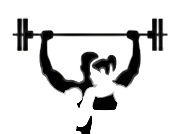
Our Program


Clash dieting, also known as yo-yo dieting, is when people keep losing and gaining weight quickly by following extreme diets. This can be really hard on your body and mind. The end of clash dieting means moving towards healthier, more balanced ways of eating that you can stick with for a long time. Instead of cutting out whole food groups or eating very little, it’s better to eat a variety of foods in the right portions. Focus on whole grains, fruits, vegetables, lean proteins, and healthy fats. By making small, sustainable changes to your eating habits, you can reach and keep a healthy weight without the stress and harm of constant dieting.

Maintaining a habit of eating healthy food is about making smart choices every day. Start by filling your plate with colorful fruits and vegetables, which are full of vitamins and minerals. Choose whole grains like brown rice and whole wheat bread instead of refined grains. Include lean proteins like chicken, fish, or beans in your meals. Snack on nuts, yogurt, or fresh fruit instead of chips or sweets. Drink plenty of water throughout the day to stay hydrated. Planning your meals ahead of time can help you stick to healthy eating habits. Remember, it’s okay to treat yourself occasionally, but keeping a balance with nutritious foods will help you feel your best every day.

Saying no to fast food is important for your health and well-being. Fast food often contains high amounts of unhealthy fats, sugars, and salt, which can lead to weight gain and health problems like heart disease, diabetes, and high blood pressure. It lacks essential nutrients that your body needs to stay healthy and energized. Regularly eating fast food can also contribute to feeling tired and inactive. Choosing homemade meals or healthier restaurant options allows you to control what ingredients go into your food and ensures you get the nutrients your body needs. Making these choices helps you maintain a balanced diet and supports long-term health goals.

